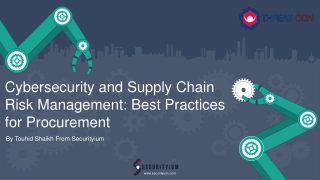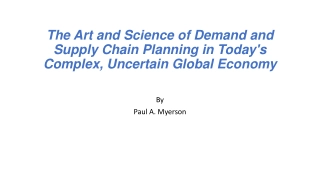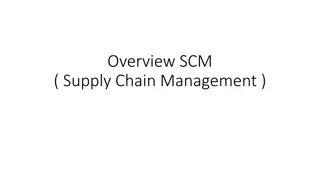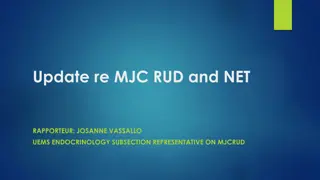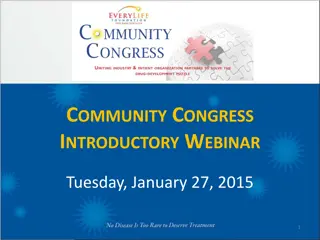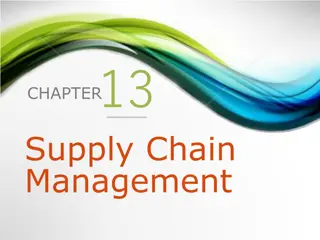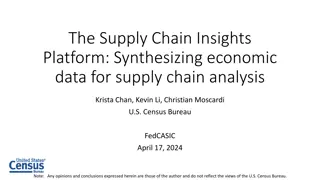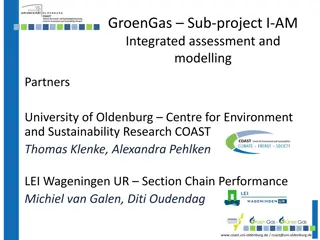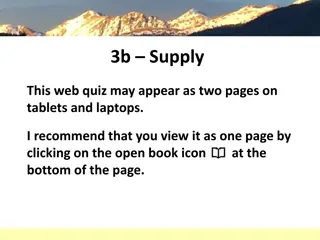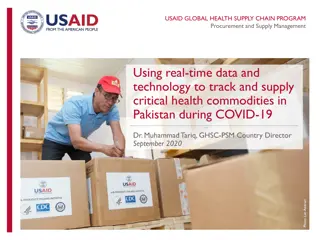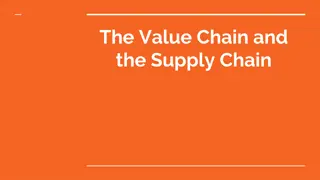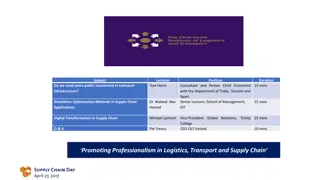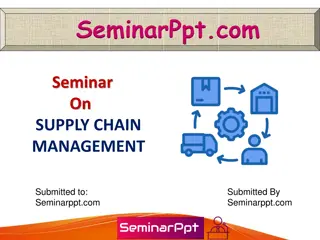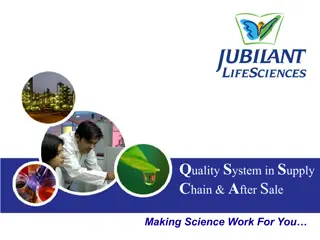European Rare Earth Elements Supply Chain Project
This project aims to develop innovative techniques for extracting rare earth elements, with a focus on in-process and end-of-life waste streams. By increasing recovery rates and establishing a sustainable supply chain, the project strives to reduce dependency on non-EU sources, enhance resource efficiency, and create economic and social impacts. Key goals include developing a cost-effective extraction process and boosting the European rare earth industry's competitiveness.
Download Presentation

Please find below an Image/Link to download the presentation.
The content on the website is provided AS IS for your information and personal use only. It may not be sold, licensed, or shared on other websites without obtaining consent from the author.If you encounter any issues during the download, it is possible that the publisher has removed the file from their server.
You are allowed to download the files provided on this website for personal or commercial use, subject to the condition that they are used lawfully. All files are the property of their respective owners.
The content on the website is provided AS IS for your information and personal use only. It may not be sold, licensed, or shared on other websites without obtaining consent from the author.
E N D
Presentation Transcript
REE4EU Integrated High Temperature Electrolysis and Ion Liquid Extraction for a Strong and Independent European Rare Earth Elements Supply Chain SPIRE Projects' Conference Brussels, 20 April 2016 Research Director Nina Dahl, SINTEF (Norway)
REE4EU SPIRE07-2015 REE4EU (IA) Realize a breakthrough in securing REE availability in Europe, providing for the first time a cost effective and efficient REE extraction and direct RE Alloys production route from abundantly available in-process and end-of-life RE-containing waste streams SPIRE Projects' Conference, Brussels, 20 April 2006 Phase 1- Lab-scale and off-line integration Market analyses, Exploitation and Year 1 Phase 2- Integrated process engineering blue-print and MDO Dissemination Year 2 Year 3 Phase 3- Pre-industrial scale piloting and evaluation Year 4 2
REE4EU Consortium SPIRE Projects' Conference, Brussels, 20 April 2006 1 October 2015, 4 years project Total Budget: EUR 9 063 772.- (EU: EUR 7 522 491.-) www.ree4eu.eu 3
Scientific/Technical Goals REE4EU Develop, validate and demonstrate in 2 industrially relevant Pilots an innovative REO mixtures extraction and a novel direct REA production route for Permanent Magnets (PM) and Secondary Batteries. SPIRE Projects' Conference, Brussels, 20 April 2006 90% recovery of in-process wastes from PM manufacturing. At least 20% recovery from EoL RE-containing waste products. 4
Current and Expected Impacts REE4EU Technological: By developing REE4EU as in-process recovery solution, Europe is expected to deliver a resource efficient technology at an economically sustainable scale, while making EU based Nd-PM producers more cost effective. By developing REE4EU as EoL recovery solution, Europe can today build the basis for robustness against price fluctuation and Chinese trade quota, while significantly reducing the environmental impact and totally emancipating its production capacity from non-EU sources. SPIRE Projects' Conference, Brussels, 20 April 2006 Economic/Social: 10% of the value of Europe s exports consist of products containing REs. 30 million jobs in Europe depend on the availability of raw materials. Total minimum recovery of 0.2 kton/year of REE-based waste (both in- process and EoL) 5.4 MEUR/year (2.9 + 2.5 MEUR). 5
Current and Expected Impacts (II) REE4EU Environmental: REE4EU will have a significant impact in terms of resource efficiency and environmental benefits, mainly: Drastic recovery of REE from in-process and EoL waste Significant potential reduction of EoL landfilling SPIRE Projects' Conference, Brussels, 20 April 2006 Reduction of environmental unfriendly acids, waste water and toxic by- products, compared to state of the art technologies 6
Technical Cross-Cutting Issues REE4EU The consortium cover the core value chain from RE recovery from PM and secondary battery waste, RE metal production, manufacturing of permanent magnets, end-users from automotive, electric and hybrid vehicles, as well as recycling companies. SPIRE Projects' Conference, Brussels, 20 April 2006 7
Non-Technical Cross-Cutting Issues REE4EU Value Chains Stakeholders Analysis. Broad and complete dissemination plan with the following ultimate objectives: Facilitate interaction and information exchange between relevant research and industrial communities. Create two-way communication channels with stakeholders, research communities, policy makers, industry and media. Ensure that the project results will live on a commercial context after the project closure. Market and socio-economic impact Analysis. Business Planning. Replication plan. SPIRE Projects' Conference, Brussels, 20 April 2006 8
Acknowledgments This project has received funding from the European Union s Horizon 2020 Research and Innovation program under Grant Agreement No 680507


